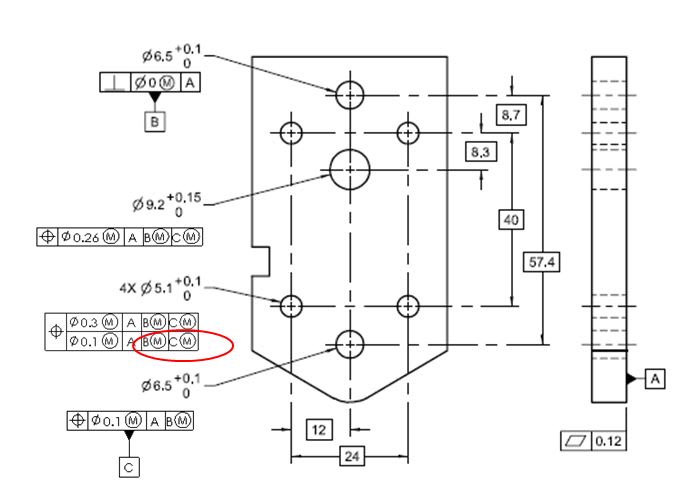Hi All,
Great thread. Wow, there's a lot to cover here.
The reference to Bill Tandler's article is interesting - I had to go back and look up what article that was. Full disclosure - Bill wrote that article and the ideas are his. All I did was provide some editorial suggestions on wording here and there.
I had the privilege of working with Bill years ago and taught his courses as a subcontractor, and consider him my mentor with regards to GD&T. One of the most important things that I learned from Bill was to listen to anyone's opinion regardless of who they are, and to not blindly trust anyone's opinion regardless of who they are. Part of this is questioning the authors of Y14.5 (or Bill himself). In the years since Bill's article on the 2009 standard was written, I had to study the gory details of composite FCF's for some Y14.5.1 development work. In the end, I came to different conclusions than Bill did.
Here's the short version.
Y14.5 states the following with regards to the FRTZF:
"If datums are specified in a lower segment, they govern the rotation of the FRTZF relative to the datums and within the boundaries established and governed by the PLTZF."
The way that this is commonly interpreted, with support from descriptions in the standard, is that each datum feature controls only rotational degrees of freedom. But I found that this interpretation doesn't work. We run into problems in applications such as the OP drawing or Fig. 7-42, with a secondary datum feature that cannot control any rotational degrees of freedom on its own. I found that there is another interpretation (also supported by some descriptions in the standard) that does work:
1. Establish the DRF for the lower segment in the usual way (each datum feature constrains the applicable translational and rotational degrees of freedom). Bill's can/may/must concept applies.
2. The tolerance zone set (FRTZF) is then allowed to translate relative to the DRF.
In other words, the way that the lower segment datums constrain rotation (and not translation) is that the zones are allowed to translate (together) relative to the DRF. There is no special "rotation only" constraint for each individual datum feature.
Y14.5 also states the following:
"In some instances the repeated datum feature references may not constrain any degrees of freedom, however, they are necessaary to maintain the identical datum reference frame, such as datum feature B in the lower segment in Fig. 7-42."
Unfortunately, this statement is not correct (in my opinion). Datum feature B does participate in the constraint, by providing a center axis that is then clocked by C. If the B reference were not there, then the DRF would be directly aligned to the centerplane of slot C.
What do you think?
Evan Janeshewski
Axymetrix Quality Engineering Inc.


